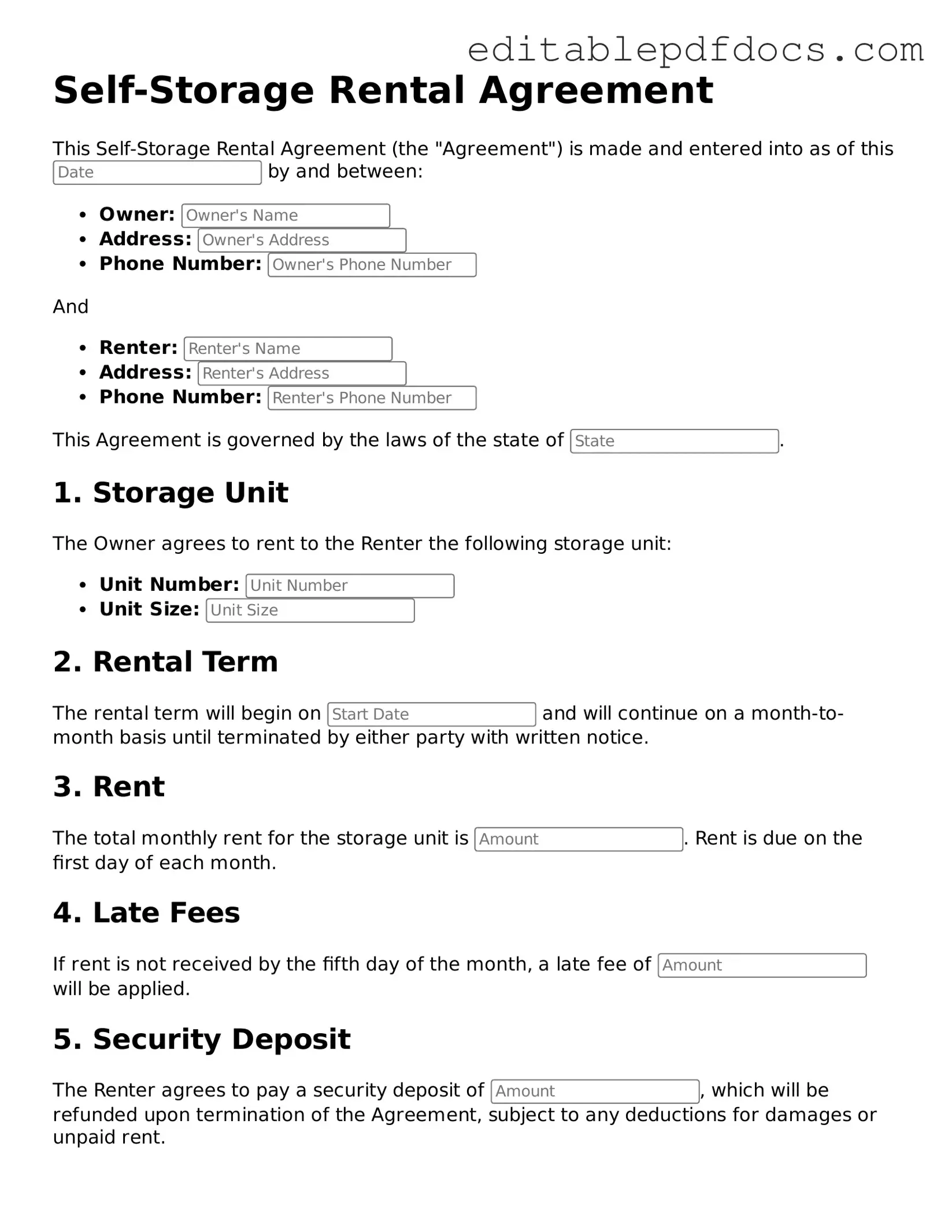Filling out a Self-Storage Rental Agreement can seem straightforward, but many people make common mistakes that can lead to misunderstandings later on. One frequent error is not providing complete personal information. Landlords need accurate details, such as your full name, address, and contact information. Omitting any of this can delay your rental process or even result in a denial.
Another mistake is failing to read the entire agreement carefully. Many individuals skim through the document, missing important terms and conditions. This can lead to unexpected fees or restrictions on access to the storage unit. It’s essential to understand what you’re agreeing to before signing.
Some renters neglect to specify the rental duration. Leaving this section blank can create confusion about when the rental period starts and ends. Always indicate whether you’re renting on a month-to-month basis or for a fixed term. This clarity helps both you and the storage facility.
People often forget to check the payment details. It's crucial to confirm the rental rate and any additional fees, such as security deposits or insurance costs. Misunderstanding these financial obligations can lead to disputes later on.
Another common oversight is not noting the condition of the storage unit before signing. Take the time to inspect the unit and document any existing damage. This protects you from being held responsible for issues that were present before your rental began.
Some individuals skip the section about access hours. Each storage facility has its own hours for when renters can access their units. Failing to clarify this can lead to frustration if you need to retrieve your belongings outside of those hours.
Many renters also overlook the importance of understanding the insurance requirements. Some facilities require renters to have insurance for their stored items. Not knowing this can result in a lack of coverage in case of damage or theft.
Another mistake is not providing an emergency contact. Including a secondary contact can be beneficial in case the storage facility needs to reach someone on your behalf. This small detail can make a big difference in communication.
People sometimes forget to ask about the facility’s policies on access and restrictions. Understanding what you can and cannot store is essential. Some items may be prohibited, and failing to comply can lead to eviction from the unit.
Lastly, many renters neglect to keep a copy of the signed agreement. Always request a copy for your records. This ensures you have a reference point for your rental terms and can help resolve any future disputes.
